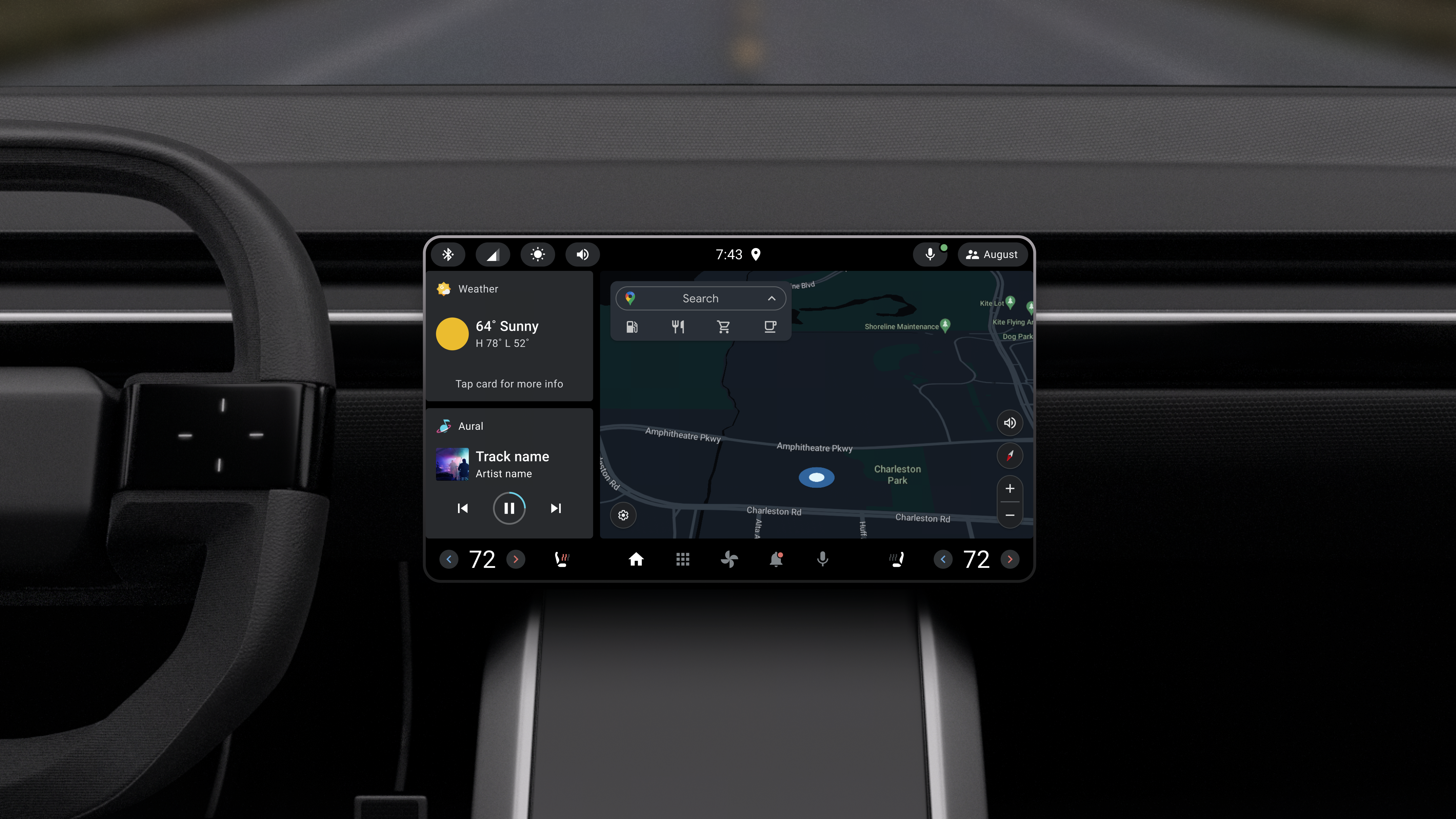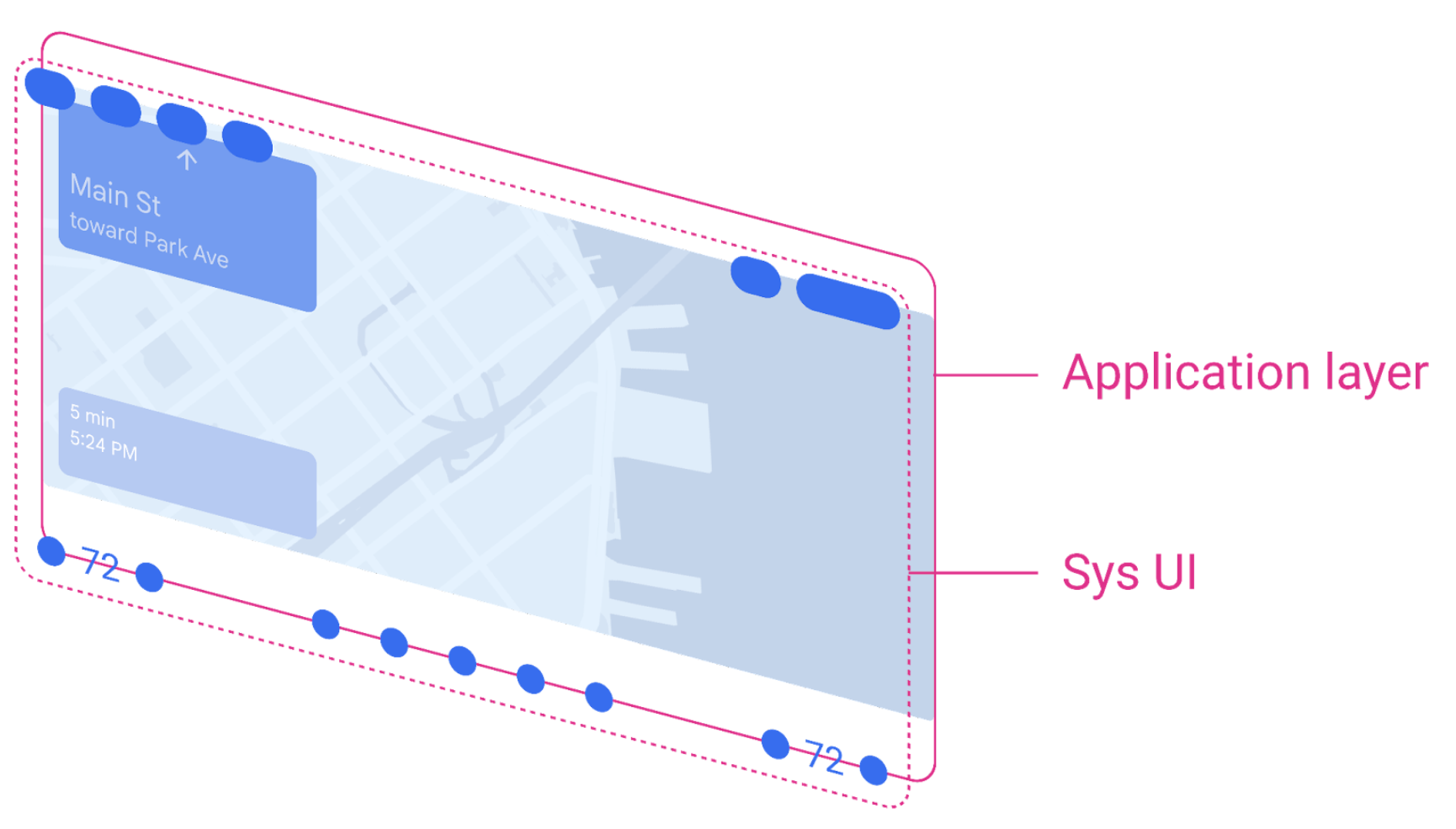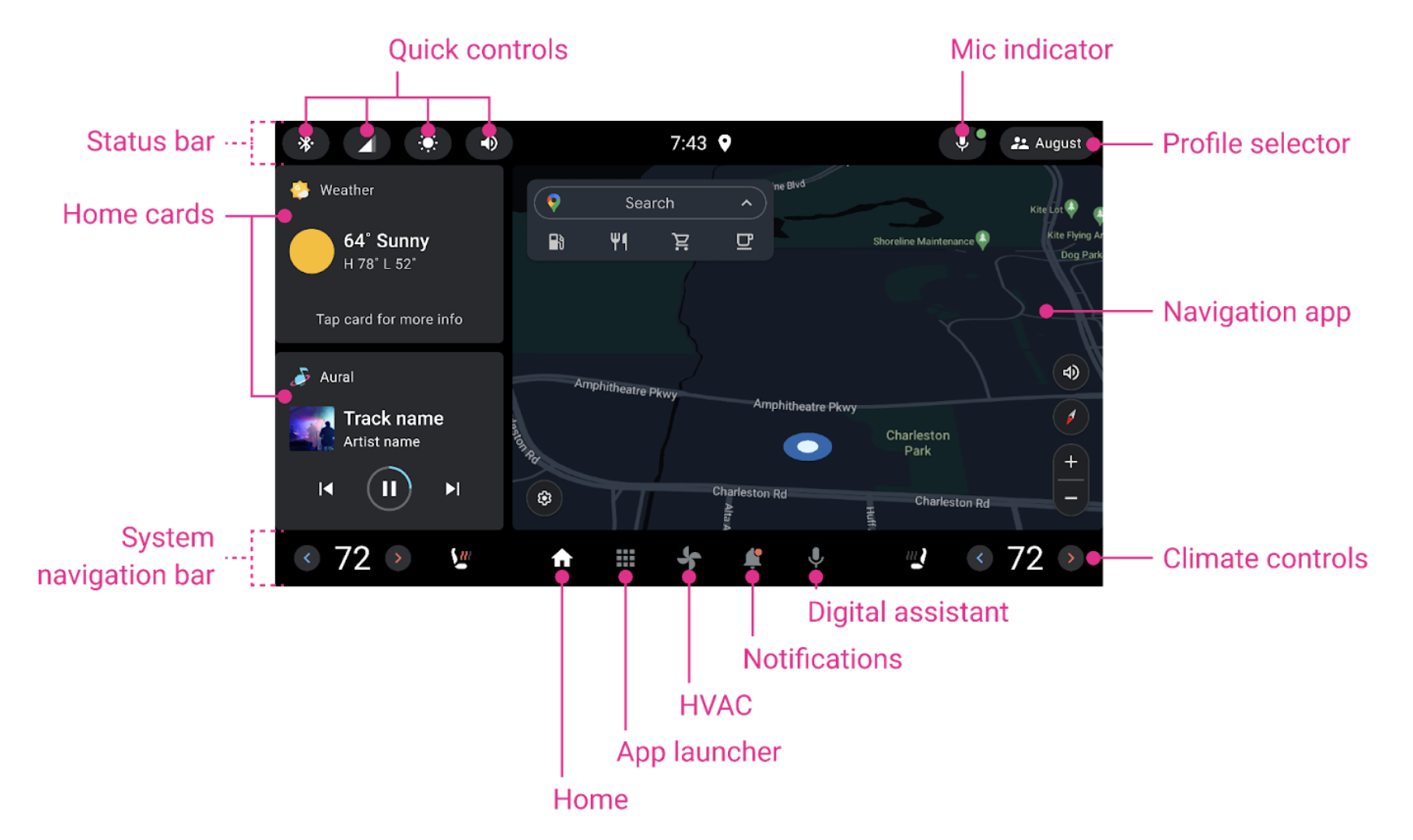小型横向参考设计优化了小屏幕上的空间,让驾驶员可以轻松访问控件和应用。
采用这种设计,驾驶员可以在小触摸屏横向显示屏上查看和执行一系列常见任务,最大限度地减少分心。用户还可以获得沉浸式应用体验。

小型横向参考设计是 Android Automotive OS (AAOS) 中的 2 个完整构建的参考设计之一。这些设计可提供基本的系统界面功能,并支持一系列车辆配置。OEM 可以选择参考设计并对其进行自定义,以反映他们的车辆和品牌。
空间模型
小型横向设计的空间模型由应用层上方的系统界面层组成。
系统界面层在屏幕顶部和底部包含一个导航栏。
应用打开后,会在应用层运行,并占用状态栏和导航栏之间的全部空间,如上所示。当系统显示主屏幕时,应用空间较小,如下一部分所示。

主屏幕剖析
小型横向参考设计的主屏幕结构如下所示。

主屏幕包含以下元素:
- 顶部的状态栏:显示快速控件、时钟、麦克风指示器和个人资料选择器。
- 首页卡片位于左侧(垂直堆叠)
- 右侧的应用(推荐使用导航应用)
- 屏幕底部的导航栏:提供用于快速访问应用启动器、气候控制、通知中心和数字助理的导航栏
当应用打开时,主屏幕卡片会消失,而应用会横向展开。
